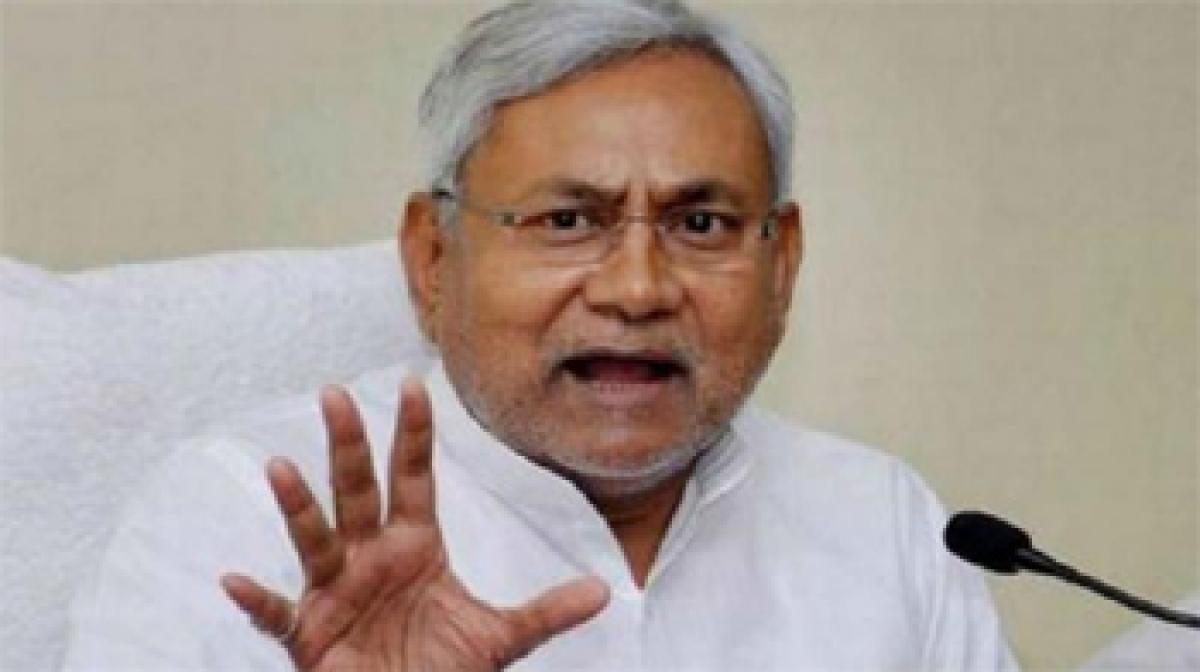Live
- Tribal Ashram school girl students fall sick again
- Grand finale of Innovation marathon begins at IIT Tirupati
- Ensure no inconvenience to bus passengers: MLA
- Being overweight surpasses smoking as Australia's leading health risk
- Rush of Devotees at Tirumala normal, to take six hours for darshans
- Thiruvannamalai turns a major revenue earner for RTC
- Development works in Warangal to take off on war-footing: Ponguleti
- Great day for America: Trump welcomes FBI chief's resignation announcement
- SAAP chief for bringing hi-tech into sports
- Paddy purchases to be sped up
Just In

The Netherlands has appealed to Chief Minister Nitish Kumar to spare the demolition of Patna Collectorate, one of the last surviving signatures of Dutch history of Bihar\'s capital, and list the centuries-old structures under the state archaeology department.
The Netherlands has appealed to Chief Minister Nitish Kumar to spare the demolition of Patna Collectorate, one of the last surviving signatures of Dutch history of Bihar's capital, and list the centuries-old structures under the state archaeology department.
Ambassador of the Netherlands to India Alphonsus Stoelinga in a letter to Kumar also suggested that adaptive reusage of these old buildings, on the banks of Ganga, could be found.
"I came across reports about the possibility of this shared built heritage of India and the Netherlands being demolished anytime.
"I sincerely believe that this built heritage depicting the Indo-Dutch history can be restored and alternate uses can be planned. I am writing this letter to appeal to you to list the complex of buildings as per the norms of the state archaeological department," said Stoelinga.
Highlighting the vulnerabilities of unprotected heritage buildings in the city, heritage body INTACH and members of civil society, including eminent historians, architects and former judges had on April 6 also urged the Bihar chief minister to spare its dismantling and restore it.
Patna Collectorate alongside Patna College's main administration building and the remains of the opium godown in Gulzarbagh, comprise the last remnants of Dutch history of Patna.
The government's move has upset experts and commoners alike and the civil society in its appeal to Kumar had also asked to "restore it to its original glory and reuse the site as a tourist attraction".
The Ambassador in his letter also cited the book 'Patna: A Monumental History' brought out in 2008 by the state government's Department of Art, Culture and Youth, where Patna Collectorate and Patna College are listed among the heritage buildings of the capital city.
A senior official at the Dutch Embassy here said, "Bihar, especially, cities of Patna and Chhapra have intrinsic links to the Dutch past, and the riverine trade and history of that era. Places like Patna Collectorate could become focal points in storytelling of shared history between the two countries."
"The buildings once restored could also serve as a backdrop for celebrating the local culture of Patna and Bihar on the banks of Ganga. That way, it will attract both foreign tourists and engage the local people with their own history," the official said.
The Dutch came to India in early 17th century with the establishment of the Dutch East India Company which traded in various Indian cities like Surat, Patna, Chinsurah (Bengal) and Pulicat (Coromandel region of Tamil Nadu). Patna was one of the major trading centres for opium and saltpetre and the Dutch built factories and godowns there on the banks of Ganga as the river played a major role in trade operation until the advent of railways in 19th century.

© 2024 Hyderabad Media House Limited/The Hans India. All rights reserved. Powered by hocalwire.com







